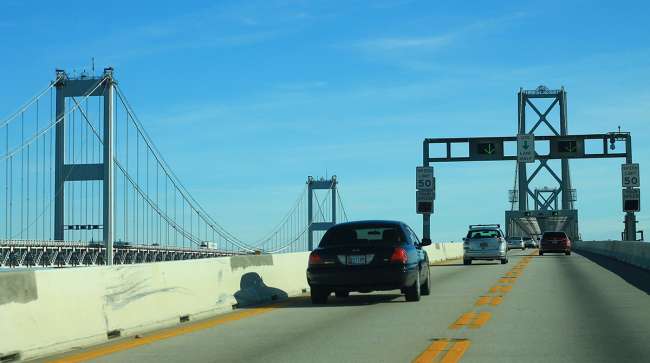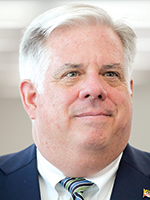Staff Reporter
Maryland Bill Would Allow Counties to Veto State Toll Plans

A Maryland legislator introduced a bill that would require the state to get majority approval from counties before installing tolls on highways and bridges that run through those counties.
House Bill 102, primarily sponsored by State Del. Brooke Lierman, seeks to expand an existing requirement that the state receive consent of the majority of nine Eastern Shore counties in order to construct tolls along their roads or bridges.

Lierman
“All my bill does is extend that right to the rest of the state,” Lierman told Transport Topics. “I think Maryland, like other states, faces huge transportation challenges over the next decade or so. I think it will require partnership between state governments and local governments to meet and address those challenges in a way that truly benefits Marylanders.”
RELATED: Virginia lawmakers strike tolling plan from I-81 bills
If passed, Lierman’s bill could stall Gov. Larry Hogan’s plan for tolls in the Washington suburbs. Hogan’s Traffic Relief Plan proposes using public-private partnerships to add four toll lanes to Interstate 270 in Montgomery County and the Capital Beltway portion of I-495 that passes through Montgomery County and Prince George’s County.

Hogan
The bill also has the potential to disrupt plans to construct a third span of the Chesapeake Bay Bridge, a toll bridge linking the Eastern Shore to Annapolis, Baltimore and Washington. The Maryland Transportation Authority’s Bay Bridge Life Cycle Cost Analysis estimates that, by 2040, traffic on the bridge will increase to at least 92,800 vehicles per day from 73,666 in 2017.
The transportation authority has overseen toll facilities since 1971, including the Baltimore Harbor Tunnel, the Chesapeake Bay Bridge and the John F. Kennedy Memorial Highway portion of I-95.
The Maryland Motor Truck Association opposes the bill, but sees benefit to Hogan’s plan.
Louis Campion, president of the association, said Hogan’s plan can offer sorely needed capacity and relieve congestion. He cited the American Transportation Research Institute’s Cost of Congestion report, which found that lost productivity in 2015 was the equivalent of 362,243 commercial truck drivers sitting idle for a year.
“We are in one of the most congested regions in the country,” Campion said. “Giving broad authority that essentially would allow one or two jurisdictions to veto the state transportation projects that benefit citizens across the state and the region will just bring these traffic mitigation efforts to a halt, and we think that’s a mistake.”

Campion
The Maryland Department of Transportation also opposes the bill. In a Feb. 7 letter, MDOT Government Affairs Director Jeff Tosi said the bill could “sound the death knell” for projects that aim to relieve congestion, including Hogan’s Traffic Relief Plan.
“Without this P3 solution in the [national capital region], local roads will continue to be overburdened with more traffic as travelers use navigation apps like Waze to look for options to get to their destinations quicker, making the local roads less safe for children and other pedestrians,” Tosi wrote. “Failure to address congestion in our major metropolitan regions in the state will severely hamper transit options as well.”
Moreover, the letter contends that the bill could jeopardize any future P3 projects and cause discord among counties. For example, Tosi said that one county’s objection to a toll could negatively affect a neighboring county’s desire to address transportation needs through tolls.
“Counties would be left on their own to deal with transportation issues within their borders if neighboring counties do not agree with proposed solutions.”
Lierman said HB 102 still awaits a vote.




